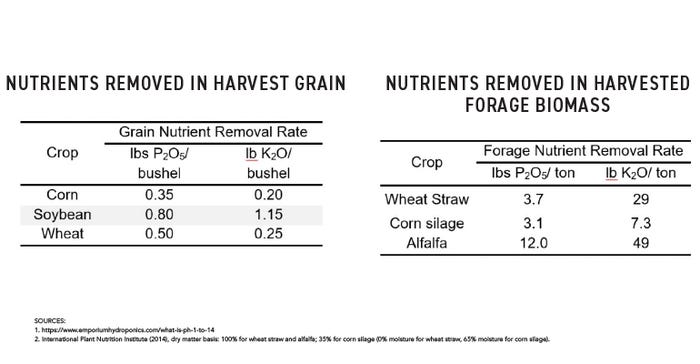October 1, 2021

Sponsored Content
What a season we have experienced so far, as the weather has certainly been variable across the Midwest. While some have had an abundance of precipitation, others watched their crop deteriorate from drought. As we look forward to harvest, we must also begin planning for the 2022 crop, and fertility management becomes top of mind.
After the challenges producers faced in 2020, we now face significant increases in operating costs, especially commercial fertilizers. In today’s case, with tight commodity prices or high fertilizer prices, growers often look to cut costs around soil fertility to help the balance sheet.
The spike in fertilizer prices hits home for many as this year’s fertilizer prices, which may have been booked months ago for this coming season, are close to double in some instances from last year. That brings up many questions for growers wondering, “Can I safely scale back on my spread amounts this year?”
As we look at everything we do in agriculture, knowledge is power! The more information we gather, the better decisions we can make. In times like this, where we see increased costs to our bottom line, it can become very emotional. It becomes easy to say, “No, I’m not spending that kind of money on my fertilizer plan.” So, before it comes to that, let’s look at some hard numbers and values to assess our fertility needs and plan from there. A basic soil test is a simple way to gather information that can add value to your operation.
Soil testing isn’t anything new. We have been doing it for years, and it is the base building block for a solid fertility plan. There are many variations of soil testing programs; we can look at grid soil sampling vs. zone sampling. At the end of the day, both are valuable, but one may make more sense for your operation over the other. Having good data is critical as we look at soil fertility. While it is crucial to look at our macronutrients, micronutrients, and base saturation levels on the soil test and get them into the optimal zones, pH is one to really get dialed in.
We need to look first at soil pH because it will determine our nutrient availability to the crop. If our soil pH is out of line, it doesn’t matter how much fertilizer we throw at it; it won’t be available to the plants. Below is a chart that shows nutrient availability by soil pH. In many fields, the soil fertility levels may be near-optimal, but the crop can’t access it without adjusting the pH of the soil. As you can see in the chart, many nutrients are most available in that 6.0 to 7.0 band. So, let’s focus on getting the pH in line first.

When we look at our more mobile nutrients in the soil, such as nitrogen (N) and sulfur (S), for 2022, those nutrients have also skyrocketed in price from last year. Now since these nutrients are very mobile in the soil, we can look at more efficient ways to apply them to help maintain our bottom line. Split applications are one option that can provide a great value for N and S. Refer to Beck’s PFR Proven™ section of the 2020 PFR Book to see what kind of results we have seen over the years from split-applying these nutrients. Split-applying also gives us the opportunity to make better in-season decisions depending on what Mother Nature throws at us.
Another key thing to consider when looking at our fertility plan for next season is crop removal. In times like this, where we want to be considerate of the high fertilizer prices and only apply what we need, look at the removal of the current year’s crop. In a situation like this, we are not building but rather maintaining soil fertility. Below is a chart that shows the removal of both a corn and a soybean crop, which can be a guideline for your fall and spring applications.

We look forward to 2022 with optimism, but that starts with a solid fertility plan for our crops. Our crops don’t care what fertilizer prices are in 2022; however, we need to ensure optimal nutrition, and that’s where a solid look at soil samples and nutrient management pays huge dividends.
Beck’s is the largest family-owned retail seed company in the United States that serves farmers in Arkansas, Illinois, Indiana, Iowa, Kansas, Kentucky, Michigan, Minnesota, Mississippi, Missouri, Ohio, South Dakota, Tennessee, and Wisconsin. According to a recent seed industry survey, Beck’s ranks as the third-largest corn and soybean brand in the United States. At their core, all Beck’s employees are Farmers at Heart. It stands for something special. It has soul. It has truth. And it represents a community of farmers, employees, and dealers who strive each day to seek challenges, push boundaries and innovate. Beck’s has, and always will be, proud to serve a community of farmers who love what they do and who are proud to be… Farmers at Heart. For more agronomic new and information, visit Beck’s Agronomy Talk page or blog at BecksHybrids.com.
About the Author(s)
You May Also Like




